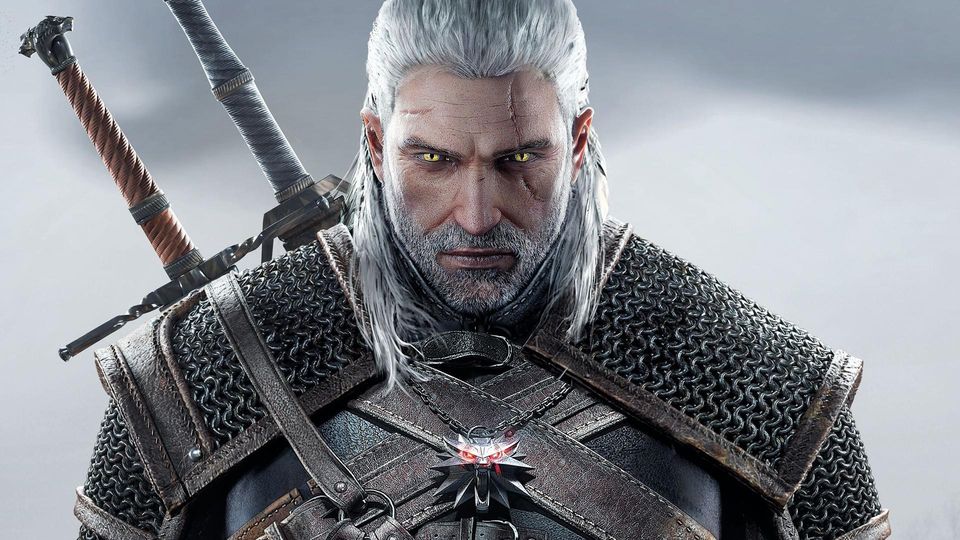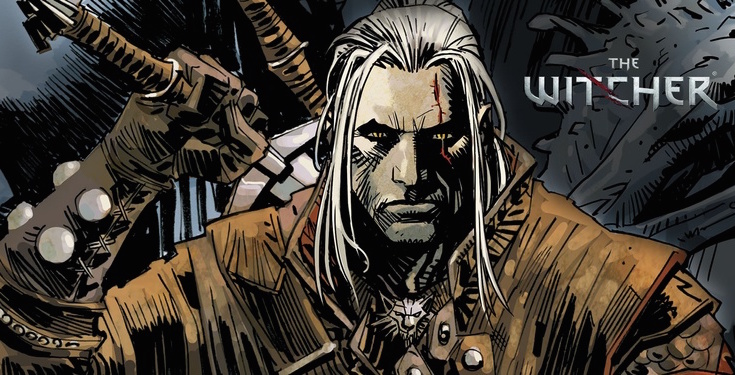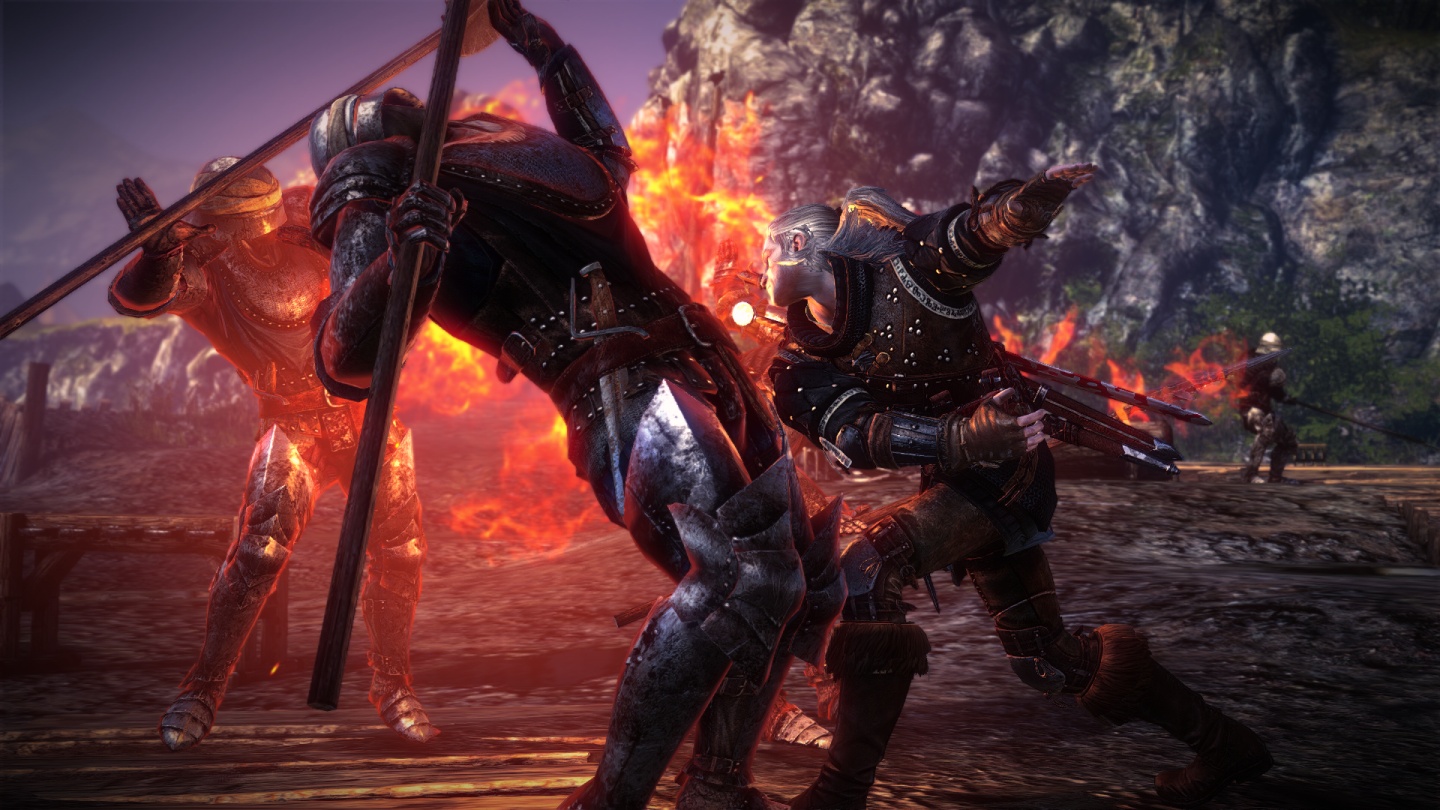The Witcher books reading order: where to start with the short stories and novels
Reading order recs for starting your Witcher novels journey.
The world of The Witcher is more popular than ever and if you're keen to go back to the source material, you'll need to know where to begin with The Witcher books. The videogames, and the many new TV show adaptations, take the broad strokes of their plots directly from the Witcher stories written by Polish author Andrzej Sapkowski.
The Witcher books include lots of stories, but the central arc follows the titular Witcher, Geralt of Rivia as he protects Ciri, a princess whose country has been conquered. If you want sword-wielding action, romance, family ties and grotesque monsters, you're in the right place.
Recent updates
February 2025: Netflix's new animated film Sirens of the Deep is based on the short story A Little Sacrifice, which you'll find it in the short story collection Sword of Destiny in the reading order below.
Witcher books reading order

It's not the most complicated fantasy series ever, but because the stories weren't released in chronologic order, release date won't be your best guide. The Witcher started in the '80s as a series of short stories written by Sapkowski for a fantasy magazine. In the '90s, the stories were published in two collections, which were followed by five novels, all published throughout the same decade. The books were released in English in 2007, with Danusia Stok translating the first two and David French taking over duties from the third book.
Let's get down to business: what order should you read the books in?
The Witcher books reading order
PC Gamer's got your back
- The Last Wish
- Sword of Destiny
- Season of Storms (optional; explained below)
- Blood of Elves
- Time of Contempt
- Baptism of Fire
- The Tower of the Swallow
- The Lady of the Lake
You'll want to start with The Last Wish. While it was published second, it's the chronological beginning of Geralt's story and the best introduction to the world.
The Last Wish introduces the world as you know it from the games and TV show: Geralt's role as a Witcher, his opinions on monsters and his Witcher code, his friendship with the poet Jaskier (Dandelion, in the games), and the beginning of his relationship with the sorceress Yennefer. It includes some of the best known Witcher stories—his battle with the Striga, how he earned the name Butcher of Blaviken, and his negotiation with Queen Calanthe of Cintra—then ends with titular The Last Wish in which he meets Yennefer.
The second book of short stories, Sword of Destiny, digs into the nuance of Geralt's moral code about killing monsters and shows several jobs during which he refuses to hunt certain creatures or comes to their defense. It also shows the developemt of Geralt and Yennefer's troubled romance and brings young Ciri into the story for the first time. If you never quite figured out the multiple timelines in season one of Netflix's The Witcher, reading through both The Last Wish and then Sword of Destiny will set you straight on how Geralt, Yennefer, and Ciri all become destined to intersect.
The final story in Sword of Destiny, Something More, aligns with the end of season one of the TV show and also sets up the political events leading into the full length novels that you'll read next.

The Witcher 4: What we know
The Witcher season 3: Trailers and cast
Witcher 3 mods: Good hunting
A more recent release, Season of Storms, takes place between the stories of The Last Wish. You can read it third, before starting on the full length novels, but I'd recommend saving it for last. Though not critical, you do get a small character cameo that has more meaning if you've already read The Lady of the Lake and a couple little nods to the looming war that the novels follow.
After that, read the main five novels in the order they were released.
Recent updates
Sapkowski has published a new Witcher book in November 2024 titled Rozdroże Kruków (Crossroad of Ravens), which is not yet translated into English. Until then we don't know where to recommend it in reading order, though we do know it's a prequel to every other Witcher book so far.
Below are the best prices for these books individually, but they do get sold together on Amazon—the first six books all together on Amazon US and the first seven bundled together on Amazon UK.
How many Witcher books are in the series?
As counted above, there are eight books in the Witcher series—six novels, and two short story collections. Some lists will count the series at nine books, including The Witcher, the original 1990 publication of the first five Witcher short stories. Because those stories were all republished in The Last Wish when the series jumped publishers, and because the original book is now out of print, it's not really worth considering as a separate title.
Other Witcher books and graphic novels

The Witcher graphic novels
Aside from the short stories and novels, Dark Horse Comics have released a lot of Witcher graphic novels. The majority of the comics are based on CD Projekt Red's videogames, not directly on the novels. While not written by Sapkowski, the comics do a great job of adding extras to already released stories, plus they look great as the art evokes the nasty themes of the books and games.
Some of the earlier volumes are difficult to find as standalones in print, so you'll want to find their respective omnibus editions as detailed below.
- Volume 1: House of Glass
- Volume 2: Fox Children
- Volume 3: Curse of Crows
- (One-shot) Killing Monsters
- Volume 4: Of Flesh and Flame
- Volume 5: Fading Memories
- Volume 6: Witch's Lament
The Witcher Volume 7: The Ballad of Two Wolves
The Witcher Volume 8: Wild Animals
The Witcher Volume 9: Corvo Bianco (issues still releasing as of 2024)
Dark Horse has also produced a couple comics specifically adapting stories from The Last Wish: The Witcher: A Grain of Truth and The Witcher: The Lesser Evil.
Lastly, there's The Witcher: Ronin which is a manga reimagining of Geralt's story, also by Dark Horse, in which Geralt travels to a world inspired by Edo-period Japan to tail a mythical Lady of Snow.
Are there other Witcher books?
Away from the novels, it's also worth reading The World of the Witcher, which is a compendium of information created directly by CD Projekt Red. It's a beautifully illustrated addition to the series that contains everything you'll want to know about monsters, weapons, people and places. Be warned, though, it does feature spoilers for the games and the books. Read it, and you too can call yourself Geralt of Trivia.
There is a designated Witcher 3: Wild Hunt art book but it is pretty rare as it was released only with collector's editions. One to look out for though; I know I always do. And there's yet more artwork available now following the release of the Gwent game, as it too now has its own art book: The Art of the Witcher: Gwent Gallery Collection. And to finish the art side of things off, there's a Witcher Adult Coloring Book that will keep you occupied long into the night, giving your favourite characters unique outfits and painting your own Witcher pictures.
Should you read The Witcher books?
Why should I read them if I’ve played the games?
Because you are obviously desperate for more Witcher content, that's why! One joy I took from rereading the series was reading them with the voices of the games' characters in mind. I could hear Doug Cockle's dulcet tone every time Geralt spoke, which adds a greater depth to the stories.
They are wonderful books to read with complex political narratives, plenty of backstabbing, magic and love. They aren't just for fantasy nerds, either; they are accessible to lovers of all genres who just want a good series to read. Once you've read them all, you can finally take part in the "What's better: the books, Netflix series or games?" discourse. Come with your notes prepared.
Reading the books will give you a better sense of the world, flesh out more of the cast and create a stronger bond between yourself and the situations in the lore. Characters are drawn with more depth, and although much of the plot will be known to you if you played the games, the books fill in small gaps here and there.

How faithful are The Witcher games to the books?
Very, though only so much of the books was directly brought to the games. CD Projekt Red went to great lengths to bring Sapkowski’s witty, wry and strong Geralt of Rivia to players of the games. Due to the branching narratives of the games, the plot is based on the books, rather than a direct retelling of every story. Everything you’ve seen in the games, however, from runes to weapons and monsters are featured in the series of novels.
There’s an interesting divide between how Sapkowski sees his world and how it was translated to games, but readers will notice only small differences here and there. Coming to the books from the games brings a certain spark of life to the battles and fights.
It's worth noting though that the games, especially ones of such quality, are designed to bring excitement and danger. This can make some sections of the book—mainly the political discussions—rather dull in comparison. The games, because they deliver the story in bite-sized chunks between the killing and hunting, offer the most interactive way to experience part of Geralt's story.
How faithful to the books is the Netflix Witcher series?
A lot more than the games, by design. Officially, the Witcher show is based directly on the books, not the games. That said, the show takes some liberties, particularity with timing. To more naturally introduce viewers to Geralt and the world around him, Season 1's story is a combination of The Last Wish's short stories and the beginning of Ciri's arc in Sword of Destiny.
The first season was confusing for some folk, so Netflix put together a gorgeous timeline map to keep it all straight (spoiler warning for the books, obviously). The second season is much more linear and easy to understand, with a few adaptations to stories here and there.
The biggest gaming news, reviews and hardware deals
Keep up to date with the most important stories and the best deals, as picked by the PC Gamer team.
- Lauren MortonAssociate Editor
- Lauren AitkenGuides Editor
- Tyler WildeEditor-in-Chief, US


